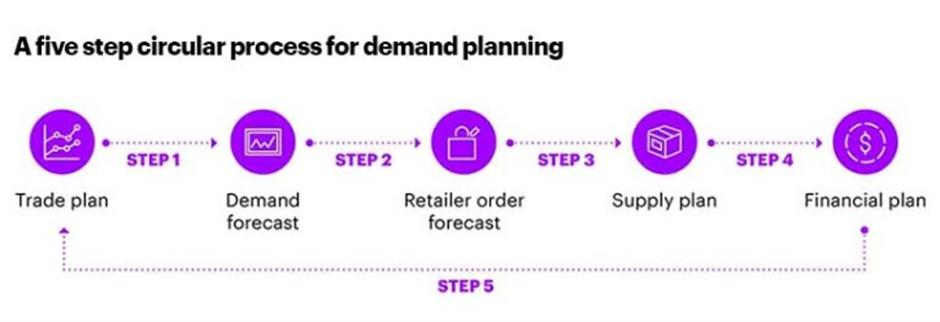sofco announce partnership with The Fine Bedding Company
‘It’s amazing how quickly balance-sheet improvements occur from supply-chain related changes.’
Implementing a functional, effective, and innovative Demand Planning Tool as part of the process of supply chain digitalisation should be a part of any company’s growth strategy.
The benefits of improved customer experience and reducing lost sales, inventory and waste are, ‘not glamorous initiatives that make headlines. But they work.’

The blog article by Accenture, linked below, is both interesting and refreshing from several perspectives. It begins with discussing and quantifying impressive benefits that have resulted from a significant supply chain digitalisation strategy, an important notion given that there should always be clear and quantifiable objectives when embarking on such a strategy, along with ongoing measurement to ensure that those objectives are delivered and maintained.
Without the benefits, what is the point?
Next to be addressed in the article were the real concerns, and indeed fears, about the cost and real-world delivery of significant supply chain digitalisation projects and the fact that they do not have to be delivered via the “All-In” route.
At sofco, we supply and deliver End-to-End Supply Chain Planning Solutions to Consumer-Packaged Goods Suppliers (including Food), General Manufacturers and Wholesalers, and Speciality Retailers and have spent many years in both the selling and delivery of projects.
These projects are often best approached in stages as it reduces risks and allows time for changes in systems and processes to stabilise at key points in highly interconnected supply chains before further changes are made.
Yes, there needs to be an overall strategy in connecting the different elements of a supply chain plan, but it is not necessary that they are all delivered at once.
For instance, we deployed a company-wide Demand Planning solution for a Food manufacturer with multiple sites and categories and the client took a “Bite Size” approach. Firstly, we delivered a robust volume forecast by SKU/Customer/Week including statistical forecasting, collaborative adjustments, and simplified trade promotions which was delivered to one category then rolled out to others. This was later built on top of in terms of adding detailed financial values to produce a Supply Chain Profit and Loss and later additions included the integration of customer EPOS data.
As a result, we have built the “Bite Size” approach into our product suite and implementation methodology. Projects are approached using a “Design Template” based on sofco’s many years of experience in deploying best of breed planning systems where a new customer is presented with the best practice design, and this is then further configured to fit the customer requirements precisely as all businesses have differences when you get to the low-level detail.
But there are, of course, exceptions to this “Bite Size” approach. For example, a Production Planning and Distribution Planning project we delivered in the Netherlands and Belgium where a food business had four manufacturing sites and two distributions centres which were so interdependent it was not feasible to break them down into subsets. They had to go live in a very carefully planned and executed “Big Bang” which was successful.
Digitalising Demand Planning can no longer be a far-off dream on the horizon. The horizon is here, the decision is now.
The ‘new take on demand planning’ that the Accenture article details, is about adding dynamism and data focus, rather than opinions, to the S&OP process. In a deployment, there are two critical forecasts at work in an S&OP cycle which are the Published Forecast at the end of each cycle which is stored for accuracy measurements and reporting, and the live Operational Forecast which allows for rapid responses to changing demand in between S&OP cycles. We have found that this particularly important for our Consumer-Packaged Goods customers and this approach can be adopted across other sectors where decisions just cannot wait.
Considering ‘Step 2: Demand Forecast’ within the ‘5 step circular process’, one of the core challenges remains the anticipation of the retailers’ order pattern when the normal rhythm changes without reflection in the historical data or notification by the retailer. For example, a change in the number of stores a product is ranged in.

Kris Timmermans: https://www.accenture.com/us-en/blogs/business-functions-blog/a-simple-immediate-power-boost-to-demand-planning
Further noise can be created by unknown stock levels at stores and distribution centres and the response of the retailers’ ordering parameters and systems. Early warnings can be found in retailer EPOS data and other external data in the longer term and the availability of this data then gives the opportunity for the introduction of Machine Learning in order that external triggers can be interpreted and applied to the internal Demand Forecast.
The real-world problem in relation to EPOS and external data can often lie in the IT resource required to systemise the capture of the raw data and then transform it so that it can be available and relevant for use by the demand planning tool. Given that the EPOS/External data is likely to use different product/store identifiers, be in different units of measure, and not be aggregated to the appropriate time bucket an amount of technical effort is required to make this work dynamically. We have found that customers with the available IT resource will carry this out for themselves. However, for those who can’t, sofco carry out data transformation as part of the packaging in delivering a planning solution.
In short, the message of delivery of benefits with a robust and dynamic process using appropriate tools and multiple sources of internal and external data that Accenture promote in their article is a message sofco fully embrace in terms of principal and practice. Implementing a Demand Planning Solution as part of your company’s supply chain digitalisation strategy will all but guarantee a profitable and future-ensuring result.
To read the full Accenture article, click the following link:
https://www.accenture.com/us-en/blogs/business-functions-blog/a-simple-immediate-power-boost-to-demand-planning













































